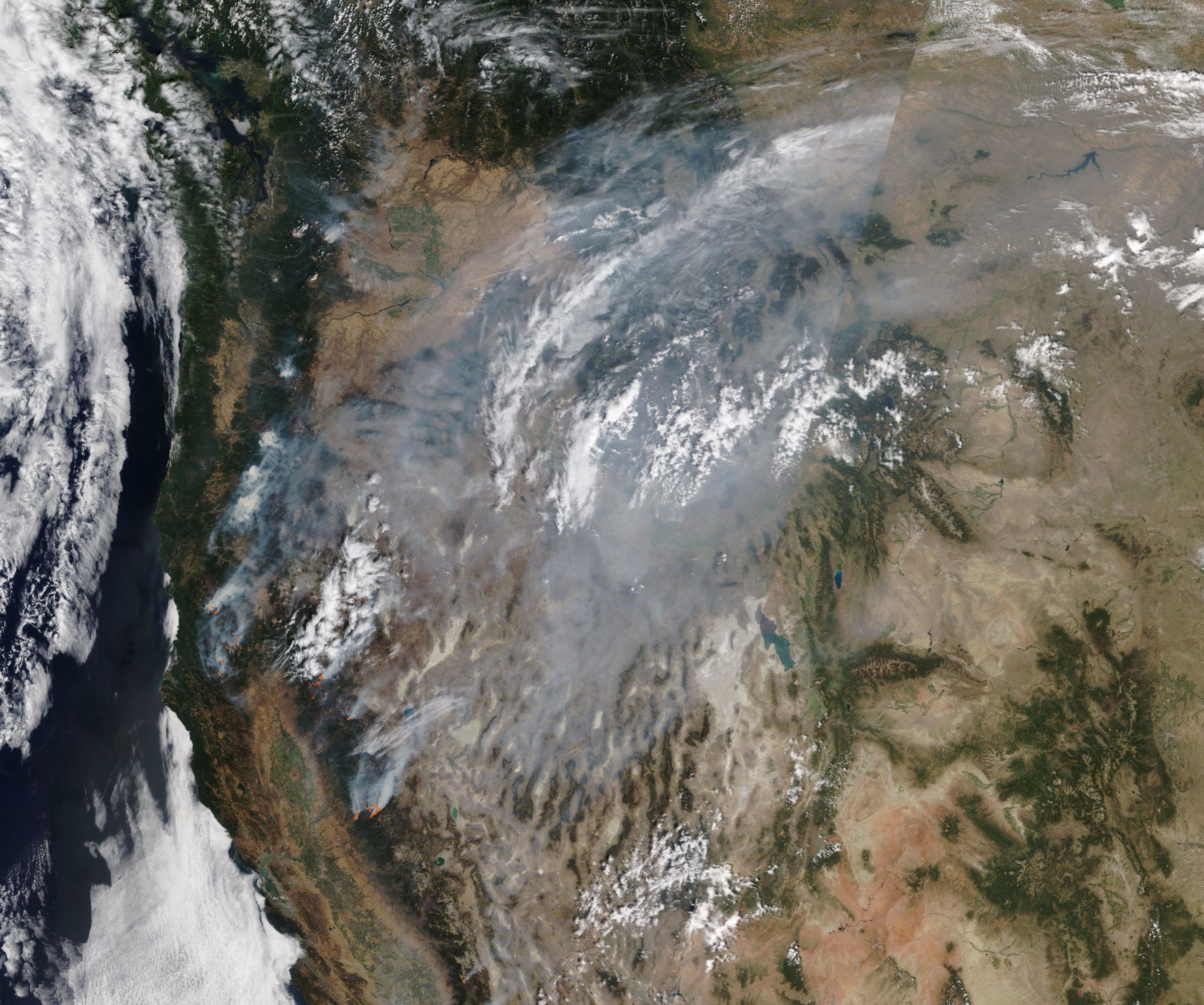THURSDAY, AUGUST 26, 2021 AS OF 2:00 PM EDT
The National Interagency Fire Center (NIFC) reports that 92 large fires are burning across six states. Collectively, these fires account for 2.5 million acres of land burned. More broadly, 2021 has seen a total of 41,197 wildfires across the country with almost 4.6 million acres burned. Across impacted states, more than 26,850 wildland firefighters have been deployed to contain the burning and minimize risks to people and property. NIFC’s National Multi-Agency Coordinating Group (NMAC), the agency responsible for assessing fire risk across the United States (US), has put the country at National Preparedness Level 5 (the highest level possible) since mid-July. The National Interagency Coordination Center (NICC) details characteristics of large wildfires in its Incident Management Situation Report (IMSR), including 30 uncontained fires in Washington and Oregon and 27 uncontained large fires in Idaho and Montana. By far, however, California has seen the greatest number of acres burned and active fires, burning across 35 active fire events.

Satellite Image showing smoke from Wildfires over California, Oregon, Washington, Idaho, Montana, Nevada, and Utah: National Aeronautics and Space Administration (NASA) Worldview Snapshots
CAL FIRE reports that as of August 23, 2021, there have been 6,773 fires in 2021 with nearly 1.67 million acres burned. The largest fires are currently burning in Northern California. The Dixie Fire, which originally started burning on July 13, 2021 in Northern California, has burned more than 747,000 acres to date. Meanwhile, the Caldor Fire, currently sitting at 136,643 burned, is headed towards the Lake Tahoe Basin and is outpacing local resources as it has destroyed 637 structures so far with 17,000 still in its path. The fire continues to burn at extreme temperatures, melting tires off abandoned vehicles and leaving only chimneys and ash behind. California wildfires are increasing in frequency and are posing challenges to firefighters across the state with non-typical behavior during the latest fire seasons. With the fire season already surpassing the acreage burned last year at this time, there is a possibility for the season to continue to burn into December. Winds are carrying embers miles away from the fire’s location and starting spot fires in dry overgrown vegetation. Dry air and hot weather can create perfect conditions for large wildfires to create their own weather patterns including atmospheric instability, thunderstorms, pyrocumulus clouds or fire clouds, and in worst conditions; pyrocumulonimbus or fire storm clouds.
Today, over 14,200 firefighters remain on the frontlines of 12 active large wildfires that have burned over 1.62 million acres. Get the latest on these incidents at: https://t.co/jBh7Rim5k6 pic.twitter.com/vqoU4jeBjV
— CAL FIRE (@CAL_FIRE) August 25, 2021
Twitter: CAL FIRE 2021 Statistics on Wildfire Support
Excessive Heatwaves and Drought
As wildfires continue to burn across much of the western US, high heat and humidity remain consistent throughout much of central and eastern parts of the country. The southwestern US may also see dangerously high temperatures in the next several days. Earlier in August, over 150 high temperature records were challenged across the West Coast. According to the Environmental Protection Agency (EPA), heatwaves in the country have become, on average, longer, more frequent, and more intense in the last 50 years. Anyone located in areas with high heat advisories should take precautionary measures, especially in areas where overnight temperatures remain over 70 degrees Fahrenheit.
With major improvements in the Southwest, Extreme (D3)/Exceptional (D4) Drought in the USA declined for the first time in a month and to a level not seen since…July.
21.4% of the USA is in D3/D4 compared to 22.4% last week
https://t.co/HtSRATnpTz @NOAA pic.twitter.com/67ODayXMQa— NIDIS Drought.gov (@DroughtGov) August 26, 2021
Along with high temperatures, over 20 percent of the country, mainly in the western US, is experiencing prolonged drought, further exacerbating the wildfires by creating drier conditions across the land. A recent study by Columbia University discovered that the western US is entering a climate-driven megadrought which may be the worst in modern history. Drought conditions in the Pacific Northwest that began in March are expected to continue into the fall and are predicted to impact agriculture and groundwater levels over the next several years. While some seasonal rainfall in the southwest decreased Extreme (D3) and Exceptional (D4) drought conditions somewhat for the first time in a month, the wildfires still burning may make it harder for rain to fall. According to a new study published in the American Geophysical Union (AGU) journal Geophysical Research Letters, the smoke from wildfires is affecting the way droplets form in clouds, potentially resulting in less rain over areas affected by wildfires.

Federal Emergency Management Agency (FEMA): Prevent accidental wildfires
Individuals play a large role in community preparedness. NIFC recommends that members of communities impacted by wildfires can do their part by ensuring roadways are clear for emergency vehicles and flammable vegetation is kept away from structures. FEMA also recommends downloading their mobile application and text messaging system for instant notifications. To get a breakdown by State and County of public advisories, the National Oceanic and Atmospheric (NOAA) National Weather Service (NWS) has provided a list of red flag warnings and air quality alerts in decreasing order of severity.
The Hagerty Blog Team will continue providing information and updates on current events and disasters impacting the nation. Visit Disaster Discourse for the latest information.
- Remember, Ready.gov provides information on how to prepare for wildfires and how to keep you and your family safe, including evacuation planning, preparing a go-bag, and staying up-to-date on warnings and notices.
- The FEMA America’s PrepareAthon: How to Prepare for a Wildfire.
- The Los Angeles Times regularly updates its tracking of California’s wildfires: California Wildfires Map.
- The National Fire Protection Association (NFPA) provides wildfire preparedness tips.
- Marin County provides a wildfire evacuation checklist.
- FEMA provides an informational video about how to be prepared for wildfires.
Keep track of Hagerty’s incident coverage here:
WILDFIRES 2021
